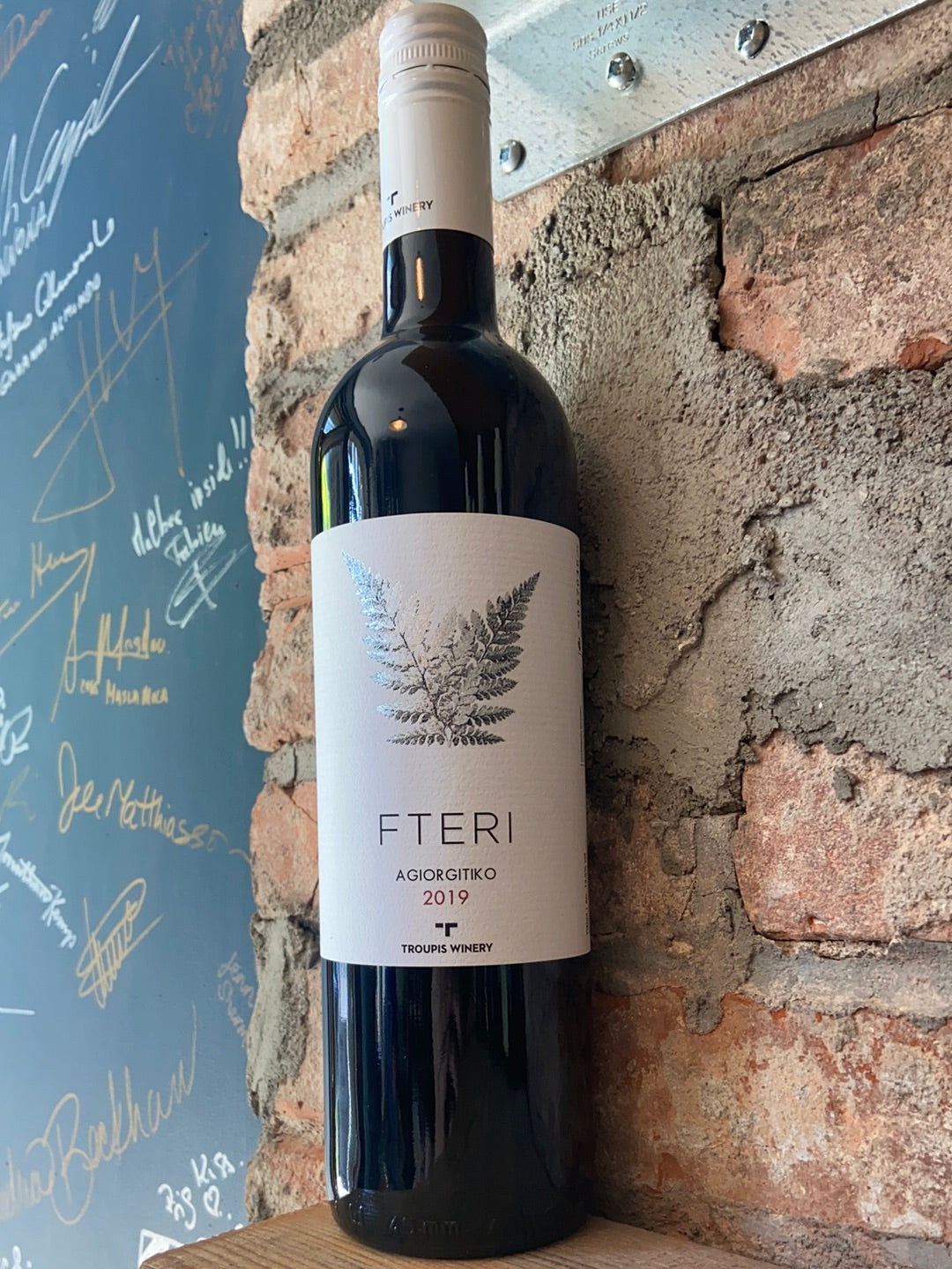DIRECT PRESS | JUNE 2021
YOUR MONTHLY WINES ARE AVAILABLE FOR PICK UP JUNE 1ST.
Not a member yet? Join today!
View Previous Months' Selections
Brooklyn Delivery: we will deliver Wednesday (6/2).
Manhattan / Queens Delivery: we will deliver on Thursday (6/3).
Free local delivery: we will deliver within the next week, and will be in touch to confirm the time.
Out of state orders: we will ship this week.
Delivery questions? orders@vanderbilt.wine
GREECE IS THE WORD

Greece is a land with a storied, ancient wine culture. We're featuring six producers (see above) from all over Greece this month that were outsiders in the past but are now influential leaders of a growing natural wine scene in Greece. Map by Jonathan Kemp
Few countries claim such a long, ancient — and intimidating — wine culture as Greece. But the recent history is that of a growing natural wine community, and of nearly extinct local varieties being rescued. All the producers featured this month were outliers and mavericks until recently. Even five or ten years ago, it was quite challenging to find Greek wines in the US that showcased the distinct characteristics of the unique grape varieties found there. Many importers were trying to lure American consumers with wines made in the so-called "International Style" that tried to fit Greek wines into a range of flavors that was more or less confined to following the trend of big flavors via new oak, cultured yeasts, and all the tools of modern food science. Indigenous varieties with names unfamiliar to international consumers were replanted with Cabernet Sauvignon and Chardonnay.
One of the indigenous Greek grapes reclaiming it's noble status is Xinomavro. Called the "King of red Greek grapes" we're featuring four different versions of Xinomavro this month. Even if you're in the 4White group, you'll get a Xinomavro Blanc de Noirs, pressed off it's skins to make a delicious white (-ish) wine. The other varieties you'll see are hopefully new and exciting as well: Debina, Assyrtiko, Negoska, Vlahiko, Roditis, and Agiorgitiko.
One of the first producers to doggedly stand behind Greek grape varieties and older, natural winemaking techniques was Tatsis (included in the 4Mix, 4Red, and Press 2), in Macedonia. When Periklis and Stagios Tatsis joined their father in the vineyards in the late 1990s, there were probably only four or five other winemakers who were working like they did.
The Tatsis brothers really embody the idea that looking to the past is the way forward, but that is certainly a common theme between them and the other featured producers this month:
Vaimaki (4Mix, 4Red, 4White) is also located in Macedonia in northern Greece, but in an even cooler-climate than Tatsis, at an elevation of about 2300 ft. Vasilis Vaimaki received a PhD focused on the oxidation of white wines, was one of the first to do extensive experiments with zero-sulfur winemaking, and one of the first to commercially release zero-sulfur wines in Greece. Earlier in his career he successfully led some bigger, high-volume wineries and cooperatives but that led him to believe that a lot of the additives were unnecessary. "Wine should contain only one ingredient," is now Vasilis' catchphrase.
Glinavos (4Mix, 4Red, 4White) is in Epirus, still in the mountains of northern Greece, but farther to the west towards the Albanian border and the Ionian Sea. The soils contain more limestone and the cool temperatures make for racy, low-alcohol wines. Lefteris Glinavos was among the first group of 'boutique' winemakers in the 1970s who went against the large-scale cooperatives. Though Lefteris studied in Bordeaux, he returned to Epirus to work with local varieties like Debina and Vlahiko.
Kontosizis (4White) was actually featured in our September 2020 wine club, as they are making some of our favorite everyday Greek whites from grapes like Roditis and the almost-extinct Malagousia. They are not in the mountains, but on a plain in Karditsa, Thessaly, that is so flat it has become the 'bicycle capital of Greece.' Kontosizis was one of the first wineries in the country to get an organic certification, back in 1991.
Troupis (4Mix, 4Red, 4White) is in Peloponnese, at the site of the crucial battle of Mantineia in the Peloponnesian War in the fifth century B.C. Though it's farther south, Troupis is at a similar elevation as Vaimaki. They've managed to make a retsina — the oft-maligned mass-produced Greek wine made with pine resin — that we think is a terrific symbol of how Greek wine is walking back many decades of quantity-over-quality without sacrificing affordability. The Troupis Retsina can still be the beverage of choice for salty fishermen at the end of a long hot day at sea.
Hatzidakis (Press2) is on the island of Santorini, and was the only producer on this tourist-friendly island working organically for many years. They make some of the most impressive, age-worthy Greek whites around, and are exceeding expectations after the untimely passing of founder Haridimos Hatzidakis in 2017. His daughter Stella now leads an all-female team that is continuing his legacy.
There is so much to taste and so much to learn when it comes to Greek wine, but this is a great introduction to the producers, regions, and wines we think are the most exciting right now. As a member, you get 10% off any of these wines for as long as we can keep them in stock, so don't hestitate to try them all.
Yassou!
Jonathan & Kirk
jonathan@vanderbilt.wine
kirk@vanderbilt.wine
THIS MONTH'S WINES
Please note, we will do our best to keep these on the shelves, but they are small-production wines and quantities are limited.
|
|
| Troupis "Pitys" Retsina NV |
|
4 MIX | 4 WHITE A modern take on the Greek classic. Retsina has been produced in Greece for at least 2,000 years. Initially created out of necessity, winemakers began sealing their clay amphoras with Aleppo Pine resin in order to prevent their wines from oxidizing and spoiling. The finished wine then became infused with piney aromas and flavors, and the style became synonymous with wine production of the islands. Despite oenological advancements in the proceeding centuries that made the use of resin obsolete, the style remained popular and is still produced today. The Troupis Retsina is named "Pitys" after the nymph in Greek legend that transformed into a pine tree to escape Pan. This elegant interpretation of the style is much more subdued than other Retsina's we tasted during the process of selected the June wines. Mass produced Retsina's use excess pine resin to mask the flavor of their poorly made wine, and this version puts the wine in the leading role, and the resin flavors in the passenger seat. 100% Assyrtiko, fermented with native yeast, aged in large, old oak barrels, and bottled unfined and unfiltered. The nose is loaded with salty citrus backed by subtle green woodsy pine, carrying over on the palate with lots of ripe stone fruit and delicate menthol notes. Rich and layered, this is unlike any other Retsina out there. Great with hard cheeses, spring salads with green goddess dressing and as a surprising mixer in gin and vodka cocktails. [Kirk Sutherland, May 2021]
|
|
|
|
|
|
|
| Glinavos "Zitsa" Debina 2019 |
|
4 MIX | 4 WHITE This is a bright, crispy white wine made from 100% Debina. Native to the Epirus region of northern Greece, it's most commonly used to make sparkling wines. You can definitely imagine this variety being perfect for bubbles with its lively energy. Nine months on the lees give it a little body with notes of pear skin and saline. This is a nice complement to the zesty mineral details, bringing to mind a sort of 'mountain Muscadet.' Certainly would be perfect for the same types of fare, like oysters or asparagus. In the region of Eprius, closer to the mountains, it might be served with trout and lemon, or greens like wild fennel, nettle, spring onion, and mint. Glinavos' patriarch is Lefteris Glinavos, who, in addition to being a former mayor of Epirus' main city Ioannina, was among the first group of 'boutique' winemakers in the 1970s who went against the large-scale cooperatives. Though Lefteris studied in Bordeaux, he returned to Epirus to work with local varieties like Debina and Vlahiko. His son Thomas now is in charge of the domaine's 20 hectares, which are farmed organically. [Jonathan Kemp, May 2021]
|
|
|
|
|
|
|
| Domaine Tatsis "Young Vines" Xinomavro Negoska 2015 |
|
4 MIX | 4 RED This is a great example of the soul-satisftying wines being made by Periklis and Stergios Tatsis. 60% Xinomavro and 40% Negoska, made from younger vines in Macedonia, the older vines in this plot go into the Tatsis "Goumenissa". Medium to full-bodied, it's ripe and grippy with stewed fruit, fig, and balsamic notes. The chewy texture gives it a rustic edge but it also provides some great structure to the hearty fruit. Xinomavro, with it's edgy sour cherry notes, has a resemblance to Nebbiolo, while Negoska's lower acidity and darker, earthy, tones are a perfect complement. Plenty of personality here but the funky flavors are reigned-in. The extra aging helps soften up and integrate the more gnarly ruggedness and add some complexity. A really terrific wine for the price. Tatsis was one of the first producers to doggedly stand behind Greek grape varieties and older, natural winemaking techniques in Macedonia. When Periklis and Stagios Tatsis joined their father in the vineyards in the late 1990s, there were probably only four or five other winemakers who were working like they did. The Tatsis brothers really embody the idea that looking to the past is the way forward. They are working with organic and Biodynamic methods and using low sulfur, if any. [Jonathan Kemp, May 2021]
|
|
|
|
|
|
|
| Vaimaki Family "Popolka Dry Red" Xinomavro 2018 |
|
4 MIX | 4 RED Zero-sulfur Xinomavro from high up in the mountains of Macedonia at 2300 feet. Xinomavro was called "Popolka" until the 1970s, and Vasilis Vaimakis uses the older name for this grape here. There's a little spritz of carbon dioxide when you first pour this wine, but don't be afraid! It's not a sparkling wine, it's just alive. Really reminiscent of the Italian Piedmont since it's got many of the black cherry and sage notes often found in Nebbiolo. However, it has a pleasing cranberry tartness as well, with some celery and white pepper. The subtle spritzy character matches nicely with the crunchy tannins, keeping the wine vivid and lively. Despite the lack of sulfur, it's not that funky, and I love the way it manages to have a serious depth while not compromising at all on playful freshness. This will be perfect for warm-weather cookouts and versatile enough for summer adventures. Vasilis Vaimakis received a PhD focused on the oxidation of white wines, was one of the first to do extensive experiments with zero-sulfur winemaking, and one of the first to commercially release zero-sulfur wines in Greece. Earlier in his career he successfully led some bigger, high-volume wineries and cooperatives but that led him to believe that a lot of the additives were unnecessary. "Wine should contain only one ingredient," is now Vasilis' catchphrase. [Jonathan Kemp, May 2021]
|
|
|
|
|
|
|
| Glinavos "Vlahiko" Ioannina Red Dry Wine 2019 |
|
4 RED Vlahiko, the red grape featured in this wine, is cultivated mostly on limestone soils in this colder area of Greece near Albania. It reminds me of the savory, rich elegance of Pinot Noir or Schiava, but with just a touch more pepper and earth, like in Nebbiolo. As you can imagine, this is a great combination. A little pine and foresty herbaceousness are mixed in with ripe cherries, and stone fruit. The finish has a mushroomy umami balanced with light tannin and pleasing mineral freshness. A terrific crowd pleaser that will pair with local Epirote fare like pork sausage or grilled lamb, but equally as well with Italian-American staples with tomatoes. Glinavos' patriarch is Lefteris Glinavos, who, in addition to being a former mayor of Epirus' main city Ioannina, was among the first group of 'boutique' winemakers in the 1970s who went against the large-scale cooperatives. Though Lefteris studied in Bordeaux, he returned to Epirus to work with local varieties like Debina and Vlahiko. His son Thomas now is in charge of the domaine's 20 hectares, which are farmed organically. [Jonathan Kemp, May 2021]
|
|
|
|
|
|
|
| Troupis "Fteri" Agiorgitiko 2019 |
|
4 RED A terrifc, all-purpose red from the Pelopponesian peninsula. Agiorgitiko, sometimes called St. George, is the most widely-planted red grape variety in Greece, and experts think it came from the Pelopponese. Some claim it was a favorite of King Agamemnon and there are even a few legends that include Hercules drinking wine made from Agiorgitiko before slaying the lion of Nemea in same region this wine is now made. Medium-bodied and moderately fruity, it has a good balance of peppery tannin and spicy acid to match the blueberry and blackberry notes. It's got a touch more extraction than some of the other selections, making it a great choice for cookouts and crowds. Fermented and aged in stainless steel. [Jonathan Kemp, May 2021]
|
|
|
|
|
|
|
| Kontozisis "Drop By Drop The Jar Fills Up" Roditis 2020 |
|
4 WHITE Roditis is a pink-skinned grape, similar to Pinot Gris. For this bottling, Andreas Kontozisis takes the unpressed, free run juice from these organically grown grapes, after a gentle cold soak, and ferments with native yeast in stainless steel. The wine didn't go through malo, and a small addition of sulfur was added before being bottled unfiltered. An easy drinking medium-bodied, Mediterranean white, with pleasantly refreshing acidity. Slightly floral on the nose, with a bit on honeycomb. Apricot and green orchard fruit dominate the palate, with a saline tinged, chamomile tea-like finish. [Kirk Sutherland, May 2021]
|
|
|
|
|
|
|
| Vaimaki Family "Popolka Dry White" Xinomavro Blanc de Noir 2018 |
|
4 WHITE In the area around Amyndeo, Macedonia, Xinomavro is known as "Popolka." Xinomavro is often referred to as the King of Greek grapes. I like to think of it as falling somewhere on the spectrum between Nebbiolo and Pinot Noir for its high acidity and pronounced tannic structure. It is known as a wine with long term aging potential. Vasilis Vaimakis makes an unexpected rendition of the grape, pressing it off the skins right away into a white wine, similar to the way that Pinot Noir is made into Blanc de Noir Champagne. The juice was fermented with wild yeasts and aged for 5 months on its lees in stainless steel, bottled with no added sulfites. The finished wines completed malolactic transformation in the bottle, naturally infusing the wine with some bubbles. Yeasty, high-toned and refreshing. Think semi-sparkling grapefruit juice, with a touch of honey and pizza dough. [Kirk Sutherland, May 2021]
|
|
|
|
|
|
|
| Hatzidakis "Aidani" Santorini 2019 |
|
PRESS 2 Hatzidakis manages to make wines with elements of Muscadet and dry Riesling — two of my favorite categories. The mixture of semi-tropical, opulent fruit with salty minerals and bright acids is enough to get you on a travel site looking for the next flight to Santorini. Pure volcanic soils adds some pungent depth but it's mostly a lovely, lean wine with a phenomenal balance of mineral texture and spicy complexity. This wine, made from 100% Aidani, is a little more delicate than the Hatzidakis wines made from 100% Assyrtiko. Fermented and aged in stainless steel, with 6 months on the lees. Hatzidakis was the only producer on this tourist-friendly island working organically for many years. They make some of the most impressive, age-worthy Greek whites around, and are exceeding expectations after the untimely passing of founder Haridimos Hatzidaki in 2017. His daughter Stella now leads an all-female team that is continuing his legacy. Stella also drew the artwork for the label when she was a child, and though she didn't intend to join the family winemaking business, she has been instrumental in leading the way forward after her father's passing. [Jonathan Kemp, May 2021]
|
|
|
|
|
|
|
| Domaine Tatsis "Goumenissa" Xinomavro Negoska 2007 |
|
PRESS 2 An impressive and excellent example of the age worthiness of Xinomavro based wines, and with no added sulfur. The natural acidity and tannic structure of these grapes helped this wine age gracefully over these 14 years. Earthy aromatics of clay and potting soil. Nicely developed notes of preserved/sun-dried tomato, braised mushroom, plum and balsamic. Long, finish of clove and dried red berries. We recommend decanting for about an hour before drinking. [Kirk Sutherland, May 2021] Tatsis was one of the first producers to doggedly stand behind Greek grape varieties and older, natural winemaking techniques in Macedonia. When Periklis and Stagios Tatsis joined their father in the vineyards in the late 1990s, there were probably only four or five other winemakers who were working like they did. The Tatsis brothers really embody the idea that looking to the past is the way forward. They are working with organic and Biodynamic methods and using low sulfur, if any.
|
|
|
|
|
















Leave a comment